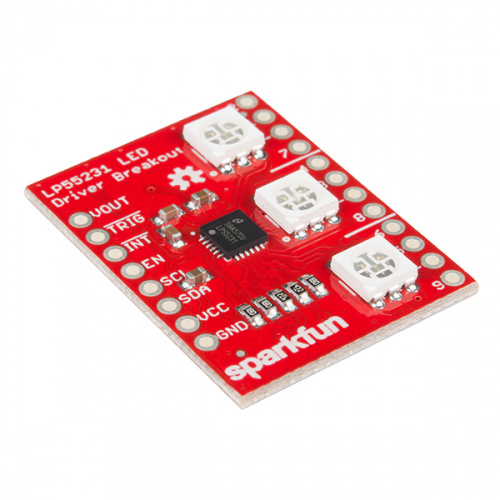LP55231 Breakout Board Hookup Guide
Introduction
The SparkFun LP55231 Breakout Board features Texas Instrument's LP55231, a nine-channel, I2C LED controller. It drives LEDs using pulse-width-modulation, so it is well-suited for variable intensity and color mixing applications.
It's intended for mobile device and automotive applications, offloading LED control operations from a host controller. It's not meant to be blindingly bright, but it's got a couple useful tricks up its sleeve.
- First, there is an onboard charge-pump power supply, which allows it to drive LEDs with a forward voltage that's higher than the power supply voltage. (Recall that the forward voltage of a White LED is right around 3.3V, blue is even higher).
- Second, it has an LED offload engine. This is an LED-specific microcontroller, which allows it do LED operations without requiring assistance from the host microcontroller. It can independently perform LED operations like chases, blinks and fades.
The breakout board includes the chip, and adds three RGB LEDs, plus connection pads and configuration jumpers.
In this hookup guide, we'll demonstrate the difference between the regular and offloaded modes. We'll start with a simple application to illustrate using the LED driver under control of the host microcontroller, then move on to show the capabilities of the offload engines. The second example will be much more technical and will put your programming chops to the test.
Suggested Reading
Before embarking upon this guide, you may want to familiarize with any of the topics below.
